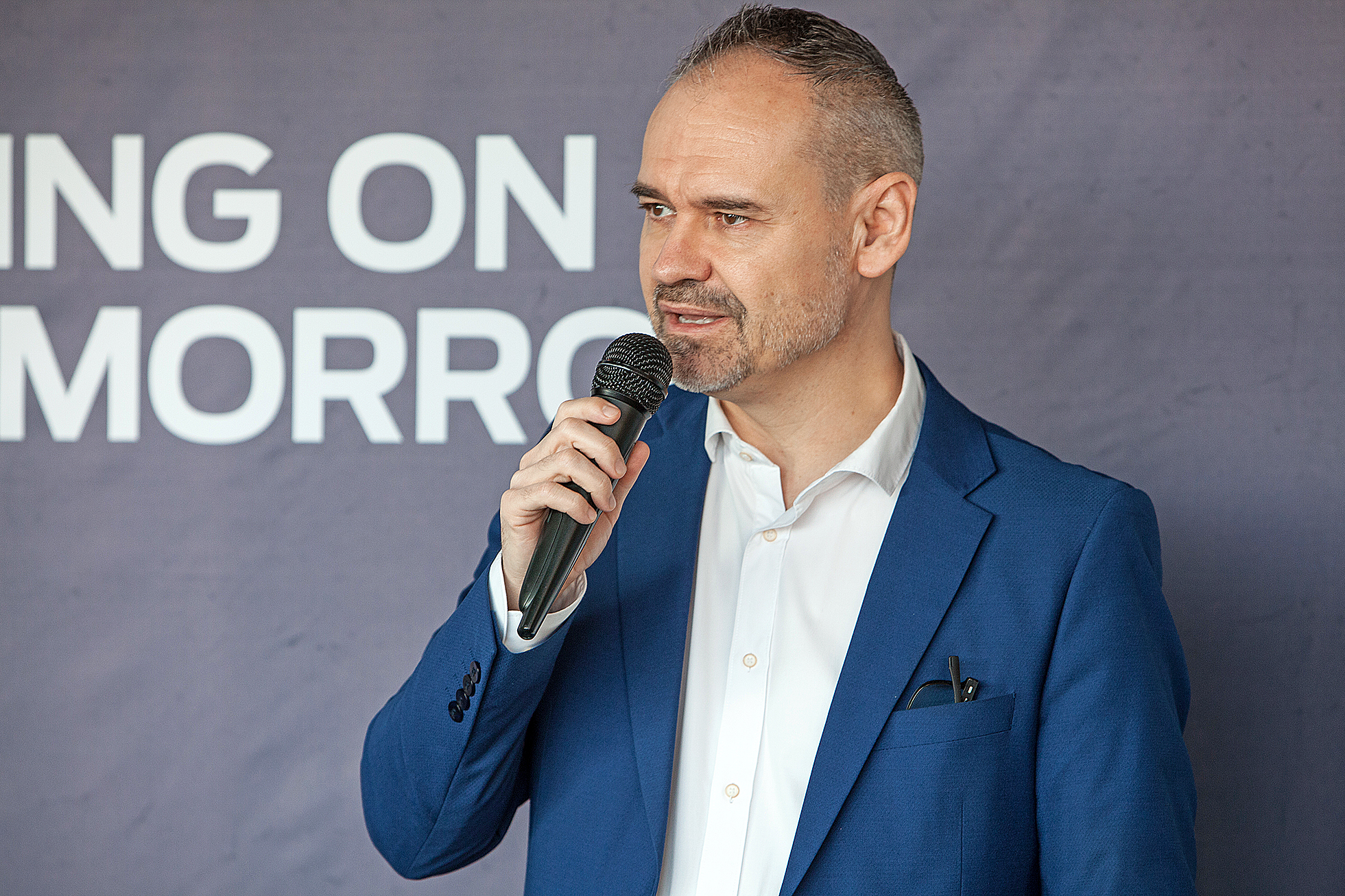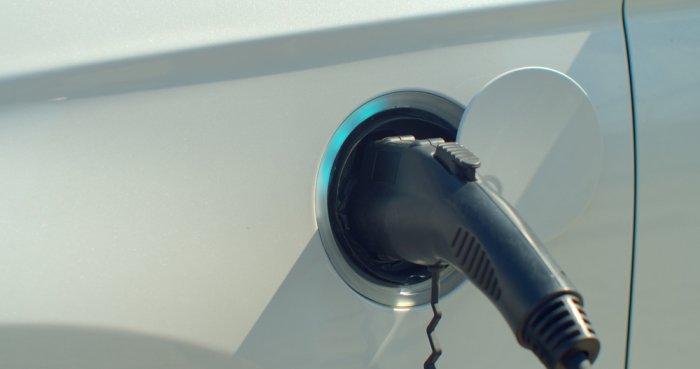Rising Commercial Sales Help Ford to Motor On

Attila Szabó
Attila Szabó, Ford managing director for the Czech Republic and Hungary, tells the Budapest Business Journal how the American automaker has weathered the COVID pandemic.
BBJ: The European auto market saw an 18% decline in 2020, according to the Economist Intelligence Unit, which expects a 5% increase in the field this year. How did Ford Hungary do last year?
Attila Szabó: In the EU 20, the drop was closer to 20%, of which commercial vehicles accounted for 18% and passenger autos 22%. Since the commercial vehicle segment is as important as the passenger segment at Ford, this helped our sales somewhat. In Hungary, the entire car industry saw an 18% drop last year, of which passenger cars again had a slightly larger share. With 18,800 vehicles sold, Ford performed best in the Hungarian market, where overall sales stood at 150,000 in 2020. In line with our strategy, commercial vehicles (60%) took the lead, which equals 30,000 cars sold.
The market share of commercial autos has been on the rise in the past three to five years. In Europe, Ford’s share in this market was 14.6% in 2020. Here, too, we see a constant rise in sales and Ford has been a market leader for more than six years. It is an important part of our strategy to keep this position and improve our share at a European level. Electrification is also gaining more traction in our utility range: many of our vehicles are now also available in hybrid or electric versions.
BBJ: The pandemic didn’t seem to affect the rollout of new models; Ford released a lot last year.
ASz: The first wave hit us hard: our factories remained closed for a month, which meant the cash flow stopped, but suppliers had to be paid regardless. One area where we did not compromise was product development: our designers and engineers worked from home, and as a result, there was no rupture in the product rollout. The only problem here was homologation; this is done by external firms which were closed down, so here we faced some difficulties, but eventually, we could roll new models out. In the car industry, planning goes beyond one year; we usually plan at least two years ahead. Therefore a few months of disruption will not stop the procedure. With dealerships closed in several countries we had to be creative about getting cars to clients, but the entire process was not disrupted.
The question here is how manufacturers can finance this period, how well-capitalized they are, and how they can cut costs. A lesson companies learned during the 2008 recession was always to have sufficient liquidity and cash available; had we not had enough reserves, we would have been more adversely affected during the second quarter. By the third quarter, we climbed back where we were when the pandemic began. This is an advantage of being a global firm; the recovery of the U.S. market helped us a lot.
BBJ: Ford raised its prices in this sensitive period when people’s finances were also less stable.
ASz: The weakening forint and the uncertainty surrounding it played a huge role in the price rise. I also closely follow the Czech market: even there, when the koruna bounced back, it remained stable instead of the forint, where we see a lot of ups and downs against not only the euro but also the dollar. The actual inflation rate is higher than what appears in official statistics, which also impacted our pricing.
Technology also makes autos more expensive. Ever more stringent safety and emission requirements by the European Union is another consideration we have to factor in. We aim to have a five-star EURO_NCAP rating in most of our models, which means building in a number of features that will add to our costs. Meeting emission requirements further increases the price, though installing a particulate filter in a diesel engine is not something the customers sense when they get in the car and for which they are willing to pay extra.
The same is true for electrification. Out of the 150,000 cars Ford sold on the Hungarian market, plug-in hybrids and fully electric cars accounted for roughly 3,000 each. Less generous state subsidies and a narrower scope of allowances than in Western Europe, together with lagging infrastructure, explain why this market segment is growing more slowly in Hungary. Considering this, plug-in hybrids are better suited to this market and should be subsidized, as they could serve as a bridge until infrastructure and scale allow a greater uptake.
As a result of the above, a general model used by masses can easily have a HUF 10 million price tag.
BBJ: What effect will this have on this year’s car sales?
ASz: We expect to see a 5-10% increase this year, which is still lower than we had in 2019. We don’t see a sharp rise in the commercial segment as enterprises are planning more cautiously. Some may replace older models simply because it is more cost effective to do so, but smaller companies are less likely to buy new cars this year.
Based on the cost of ownership, companies buying commercial vehicles are more likely to replace their existing fleet; we have offers that make even a three-year-old model worth changing. The availability of different financing options can also boost sales. Ford Credit is an established payment system in Hungary to help dealers and customers.
We also tried a six-month deferred payment where you don’t have to pay in the first six months or an initial installment. Ford first introduced this option in the United Kingdom, where it proved to be very popular; here, however, clients were wary of choosing it. The system in Britain is different, though; there, it is not unusual for one to use Ford models throughout their entire life, where they keep changing models and pay the monthly fee. In our region, people are less open to different financing options, ownership is still prevalent , and there are other payment options. Operational leasing works only with a specific portion of the corporate segment, while in Denmark, for example, even SMEs use this option.
BBJ: What is the breakdown of different payment schemes in Hungary?
ASz: Among corporate clients, financing is typical, while among private users, it accounts for around 30%. Many still pay in cash (they may have set aside for it), rather than considering other options that could save them costs.
BBJ: Beyond sales, what other revenue streams, for example, partnership with car-sharing companies or new software, do you have?
ASz: In Hungary, the approach to these innovations is, again, somewhat different from the rest of Europe. Here, FordPass, a mobility app with connectivity services, is already available, and a subscription-based version will soon be launched as well. However, as with other innovations, we are at the beginning stages, and first, we have to convince our customers to install the app. The business case behind it is providing a lot of innovative commodity services to clients free, but for which, when we get to the point where electric cars become more widespread than now, we can start to charge. Anything people have to pay extra for takes longer to expand in this region, but this is how carmakers will generate revenues besides sales; through user-experience and related services. This requires a lot of investment initially: to create and install the technology and to make users accept it and use it until you reach the point where they would miss it should it not be there.
This article was first published in the Budapest Business Journal print issue of May 21, 2021.
SUPPORT THE BUDAPEST BUSINESS JOURNAL
Producing journalism that is worthy of the name is a costly business. For 27 years, the publishers, editors and reporters of the Budapest Business Journal have striven to bring you business news that works, information that you can trust, that is factual, accurate and presented without fear or favor.
Newspaper organizations across the globe have struggled to find a business model that allows them to continue to excel, without compromising their ability to perform. Most recently, some have experimented with the idea of involving their most important stakeholders, their readers.
We would like to offer that same opportunity to our readers. We would like to invite you to help us deliver the quality business journalism you require. Hit our Support the BBJ button and you can choose the how much and how often you send us your contributions.









